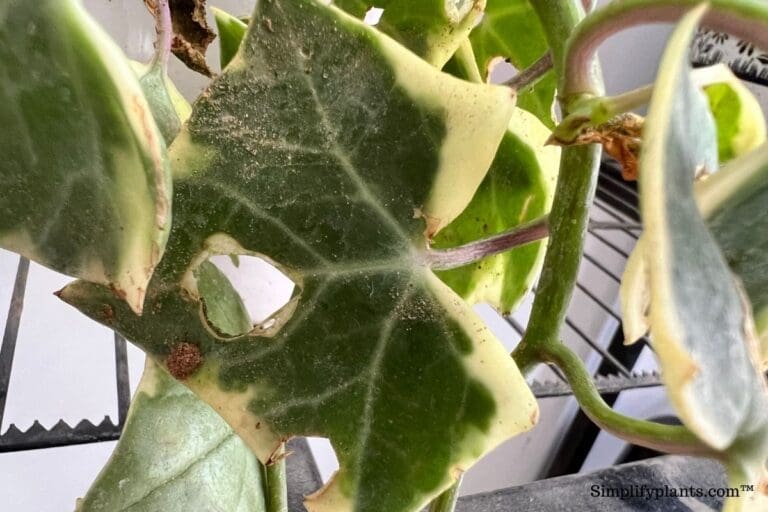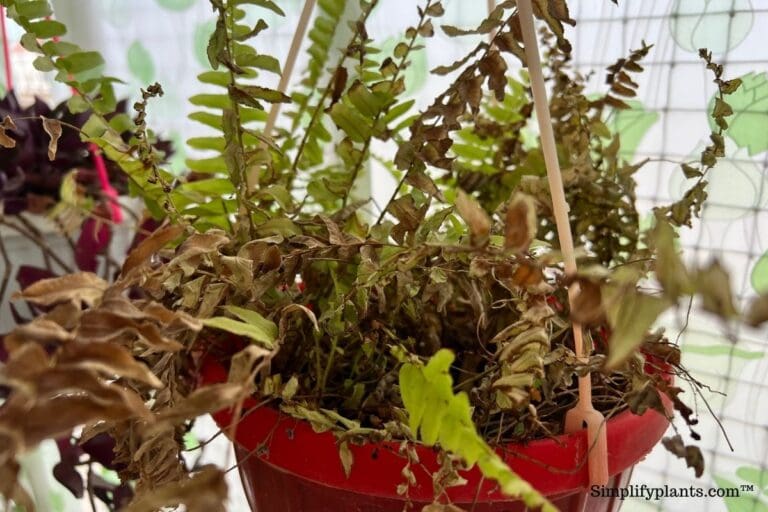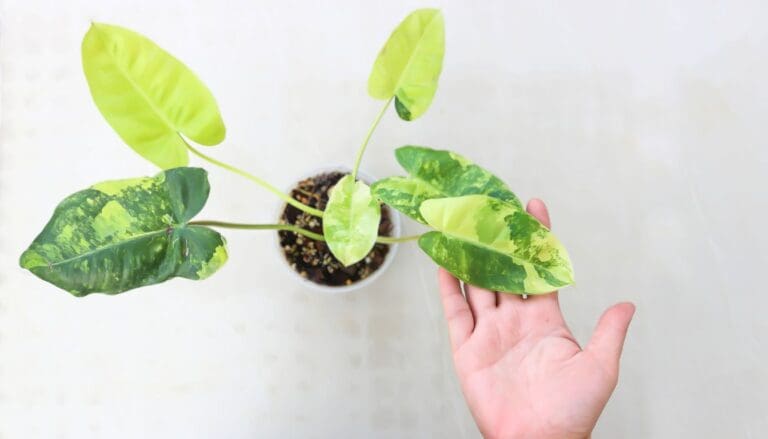What Kind Of Light Do Peperomia Need? (Peperomia Light Requirements)
Peperomia is an excellent choice if you are looking for low-maintenance houseplants. Peperomia comes with a wide variety of attractive leaves and can tolerate a wide range of weather conditions. The first thing you need to grasp if you consider getting a peperomia is the lighting conditions ideal for it. So, in this article, we shall discuss all about the lighting requirements of the peperomia plant.
Peperomia requires medium to bright indirect light and can even adjust with low light conditions. You can keep them under direct sunlight during the early morning when the rays are soft and tolerable for the plant. However, make sure to avoid harsh direct sunlight to prevent sunburn.
If you don’t have adequate natural light available at your house, consider getting artificial lights as these plants will do well even in artificial lights.
An East or West-facing window sill is preferable for these plants. One thing to make sure during the summer months is that they don’t get too much direct sunlight, which might cause the leaf burn.
Now, let’s understand more about the kind of light needed by a peperomia plant.

Please note: Simplify Plants is reader-supported. Some links in the post are affiliate links and I get a commission from purchases made through links in the post.
Importance of good lighting
The growth and development of all plants depend a lot on light. Photosynthesis is dependent on the availability of light sources for all plants. This energy is required by all plants to grow, blossom, and generate seeds.
Plants cannot synthesize carbohydrates without sufficient light, and once the energy reserves are depleted, the plant might die.
Peperomia plants are no different than other plants. They will grow and thrive if they get their fair share of light but face challenges if they don’t receive enough light.
What kind of light does a peperomia need?
Peperomia plants thrive best in indirect light that usually ranges from medium to bright. Although some varieties of this plant can withstand lower light, most of them like to be on the brighter side.
Peperomia do not always withstand bright light and can manage to grow well in a diffused lighting environment.
The best way to describe the lighting requirement of peperomia is that it requires medium to bright indirect light.
Direct vs. Indirect Light
Whenever we talk about the lighting conditions of houseplants, we use these two terms – direct light and indirect light.
Direct sunlight means that the rays of the sun are hitting the plant without any filter in between. Most houseplants don’t prefer this and tend to get scorched due to direct sunlight.
Indirect sunlight refers to filtered light that does not affect the plants like the direct harsh sun rays. This is ideal for most houseplants, including peperomia plants.
If you place the peperomia near a window without curtains, the plant will get direct sunlight. On the other hand, if that same light is blocked or filtered with blinds or curtains, the plant will receive indirect light.
Summer vs. Winter lighting needs
Summer is the growing season, and plants get enough sunlight to produce sufficient energy for their growth. Peperomia requires a good amount of medium to bright indirect sunlight during the summer months for its growth and development.
Winter is the dormant period for the houseplants. They rest and go dormant during this time. This happens because the days get shorter in winter, and the plants don’t get as much light.
So, the plants go dormant to save their energy. It is completely fine not to see any growth in your peperomia plant during this time.
During winter, you can place the peperomia under direct sunlight for an hour or two when the intensity of the light remains the least. However, do not try doing this during the summer months.
Best spot for peperomia

The indoor window set up in a house in the eastern direction provides the best light and optimum temperature conditions for a peperomia’s healthy growth.
During the morning, the sunlight’s intensity remains low that gradually increases as the day progresses. The eastern window or balcony setups are preferable and cooler than southern setups because plants in the east absorb less radiant heat than those in the south.
The eastern configuration allows the Peperomia plants to lose less moisture. However, if you place the peperomia near a south-facing window, you must ensure that it is not receiving too much or too intense sunlight.
Effects of low light
The first indicator that your peperomia is not getting enough light is when it starts to grow leggy.
As the peperomia keeps looking for a light source, the stems begin to lengthen, and the distance between the new leaves increases.
You may trim those areas off and move your peperomia plant closer to a brighter light source. That should help the plant grow normally again.
If you don’t recognize these indicators and leave your plant in a dimly lit place, you may discover that its development is slowing down.
Your peperomia plant will start dying if the light is too dim for too long. You must keep a check on the plant, so you don’t neglect these warning signals to maintain a healthy plant and prevent it from dying in the worst-case situation.
However, you may easily cut it back to maintain the plant’s compact appearance if this happens. Relocate the plant to a more suitable spot.
Effects of too much light
When it comes to peperomia light requirements, too much light can be more detrimental than little light. Succulents can take stronger light better, while peperomia plants will struggle under direct sunlight.
Overexposure to sunlight can cause scorching, browning, or reddening, as well as curling inwards of the leaves. Curling of the leaves is a protective mechanism for leaves to conserve water and protect the plant.
If you detect any symptoms that signal that your plant is placed in a region with direct sunlight, you must move it to a shadier location. If you don’t, your Peperomia plant may run out of water too quickly and get dehydrated.
Signs of improper lighting of peperomia

If your plant is not kept at the right spot, it will face difficulty adapting to unsuitable lighting conditions. It will show different symptoms as indications of problems.
If the peperomia is getting too little light, you will notice:
- The stems will get elongated, with lengthy intervals between its leaves.
- The size of new leaves will appear smaller than existing ones.
- Stunted growth.
- The new shoots will also become leggy.
If the peperomia is getting too much light:
- Brown-colored spots will appear on the leaves as a result of sunburn.
- The color of the leaves will appear dull or faded out.
- Plants will wilt in the middle of the day.
- The leaves will get dry and fall off.
What to do if my peperomia is not getting sufficient sunlight?

Peperomia plants are indoor plants that require a good amount of indirect bright light. But in the absence of sufficient sunlight, you can use artificial lights to provide enough light for the plants to develop properly.
Fluorescent light
The fluorescence-based tubes or lamps can provide light to peperomia plants when they don’t get enough sunlight. These are very useful because the type of light they emit aids the development of the peperomia plant.
Fluorescent tubes also generate a small amount of heat when used.
The amount of light required should be determined by the plant type as different plants have different requirements. The peperomia plant’s foliage requires 14-16 hours of light every day.
LED lights
The newest source of artificial light for peperomia plants is light-emitting diodes (LEDs). They produce a lot of energy, are well-organized, and last a long time.
LED artificial lights are coupled with red bulbs to encourage flower buds and blue bulbs to promote foliage creation in houseplants.
What to do if my peperomia is getting too much light?
If you notice crispy brown spots or discoloration on the peperomia leaves, the plant might be getting too much light. In such a case, you can follow these steps:
- Relocate your peperomia to a spot that gets less intense light and no direct sunlight.
- Prune the discolored and damaged leaves; otherwise, these will waste the plant’s energy.
- Water the plant thoroughly if it looks dehydrated and the leaves appear dry.
What will happen to my peperomia plant in the absence of light?

Due to a lack of light, your peperomia plant may be more susceptible to pests and illnesses. The majority of peperomia plants survive in low light circumstances, but they can get unhealthy.
The plants living in low light are more susceptible to pests and diseases, and they are unlikely to grow into large plants. If you keep your peperomia plant away from light for an extended period, it will possibly die.
Curled leaves and leaf loss are some signs of low light. If your plant appears sickly, try moving it closer to a window or adding a grow lamp to temporarily increase the light levels – especially during the winter when the intensity of the sunlight remains low.
Also Read: Peperomia Winter Care: Light, Watering & Other Essentials
Final Thoughts

Peperomia plants are noted for their ability to thrive in low-light environments, which many other plants struggle with. However, that does not imply that they may be grown in rooms with little or no light.
They still require sufficient light to photosynthesize and thrive. Remember that plants develop in response to the amount of light they receive, and Peperomia is no exception. The more light they receive, the fuller their development will be.
If your home is dark and doesn’t receive much light, go for a non-variegated variety. Get a variegated variety if you can locate it in a brighter area. But whichever type you have, keep it away from the windows that get direct sunlight or filter out the light with blinds or curtains.
After following every necessary step, there is no doubt that your Peperomia plant will thrive.
Ref: University of Florida, Sage Journal, University of Vermont, New Jersey Agricultural Experiment Station
Rutgers, The University of Arkansas, Britannica, Wikipedia, Peperomia Diseases, NC State University.
Recommended Garden Supplies
| Product Image | Our Recommended Gardening Supplies | Check Offers! |
|---|---|---|
Top Top
Top
Top
Top
Top
Top
Top
Top | rePotme Houseplant and Tropical Classic Potting Soil Mix | Check Offer On Amazon |
 Top
Top
Top
Top
Top
Top
Top
Top | Espoma Organic Indoor Plant Food | Check Offer On Amazon |
 Top
Top
Top
Top
Top
Top
Top
Top | GooingTop LED Grow Light 6000K Full Spectrum Clip Plant Growing Lamp | Check Offer On Amazon |
 Top
Top
Top
Top
Top
Top
Top
Top | Soil Moisture Meter | Check Offer On Amazon |
 Top
Top
Top
Top
Top
Top
Top
Top | Govee Hygrometer Thermometer, Bluetooth Enabled! | Check Offer On Amazon |
 Top
Top | LEVOIT Humidifiers for Large Room(Best For Plants) | Check Offer On Amazon |
 Top
Top
Top
Top
Top
Top
Top
Top | Upgraded DIY Automatic Drip Irrigation Kit, 15 Potted Houseplants Support | Check Offer On Amazon |
 Top
Top
Top
Top
Top
Top
Top
Top | Stainless Steel Heavy Duty Gardening Tool Set | Check Offer On Amazon |
 Top
Top
Top
Top
Top
Top
Top
Top | Bonide Insecticidal Soap | Check Offer On Amazon |
 Top
Top
Top
Top
Top
Top
Top
Top | Bonide 32 oz Spray Neem Oil for Organic Gardening | Check Offer On Amazon |
 Top
Top
Top
Top
Top
Top
Top
Top | Garden Safe Fungicide | Check Offer On Amazon |






